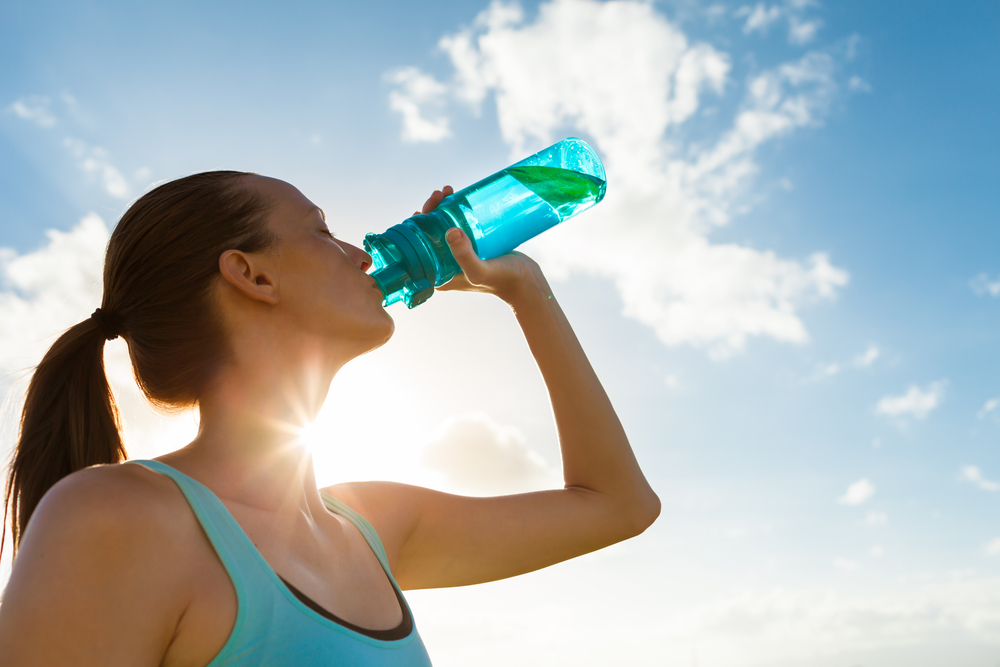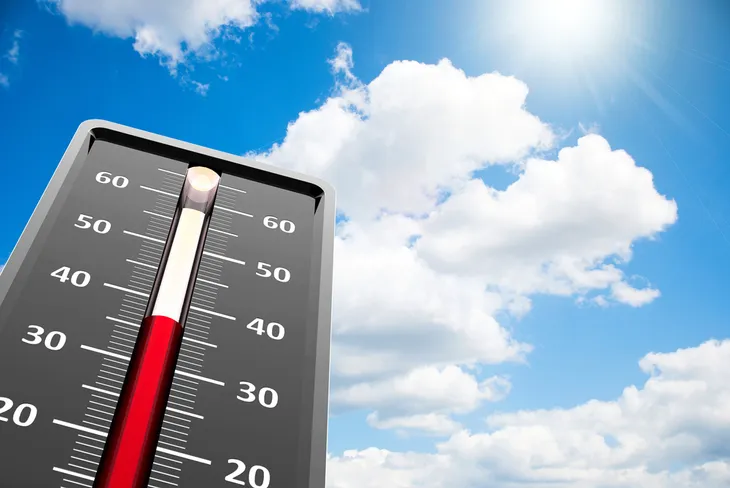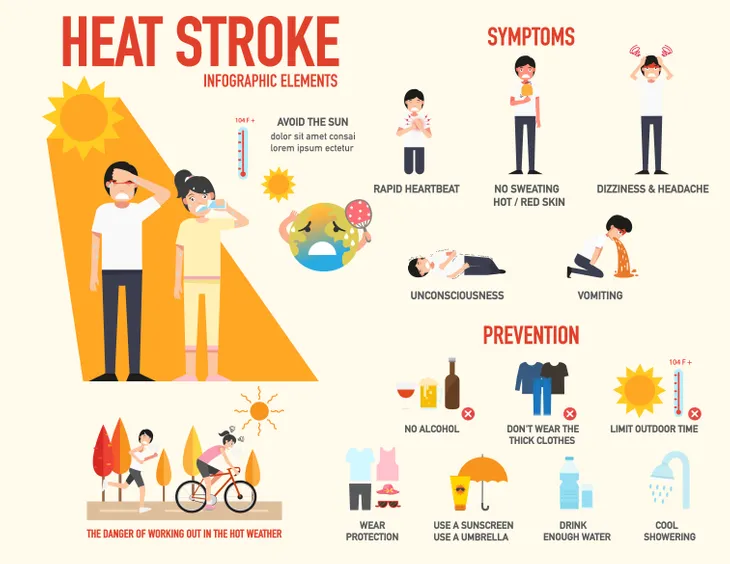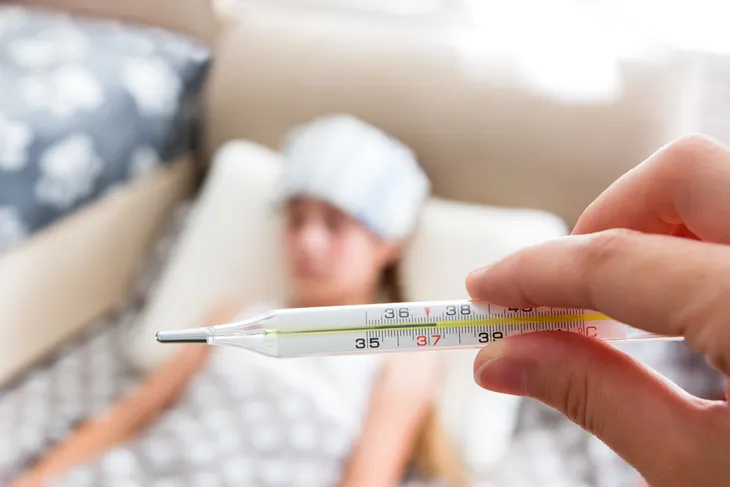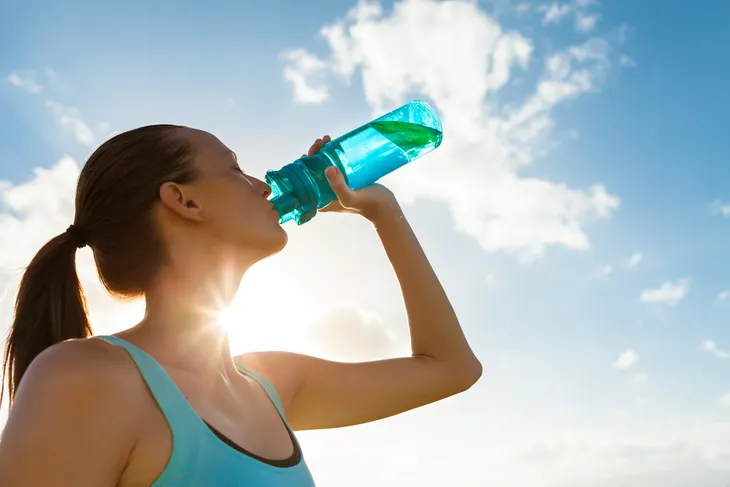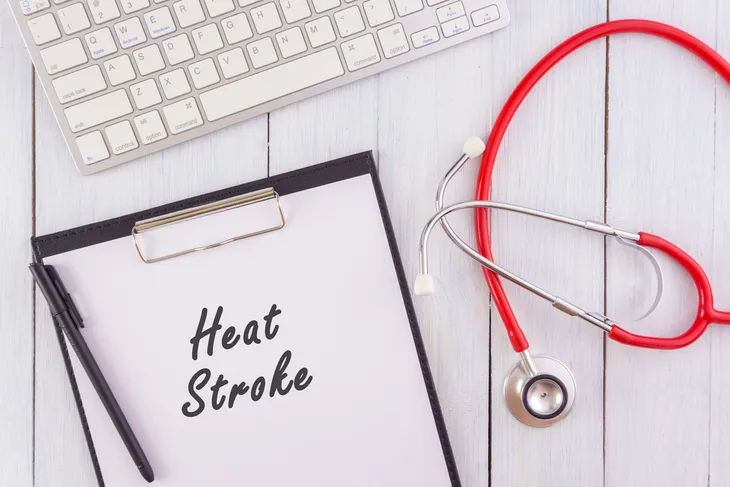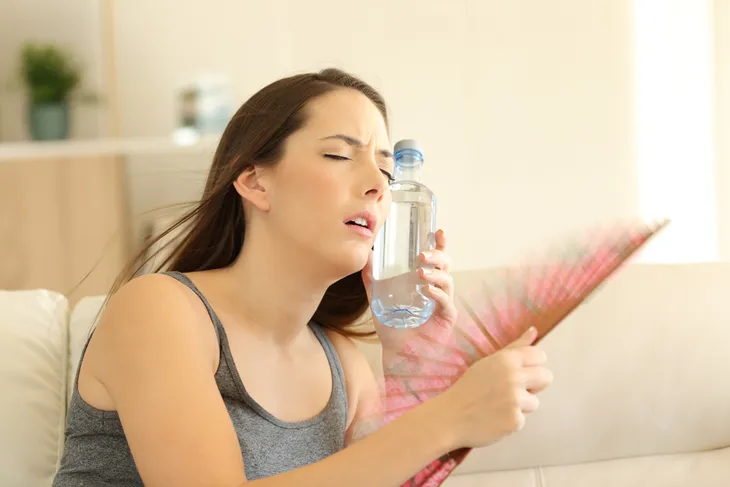With high heat comes a higher risk of heat exhaustion and heat stroke, and there’s nothing cool about either of them. It’s important to take precautions when you’re outdoors for extended periods of time and know the signs of these heat-related illnesses.
Here are the 12 main differences between heat exhaustion and heat stroke…
Defining Heat Exhaustion
Looking at heat exhaustion from a children’s point of view, ActiveKids.com explains that heat exhaustion is when your body has not been properly hydrated. “In children, ensuring proper hydration while they play or participate in athletics is vitally important,” it notes.
Children heat up even more than adults (in already hot conditions) when they’re taking part in sports and other activities, but their ability to sweat is less than adults. “This reduces their ability to get rid of body heat and can quickly lead to dehydration,” it adds.
Defining Heat Stroke
Although this doesn’t actually involve a stroke of any kind, heat stroke is the more serious condition of the two and is actually a life-threatening medical emergency, explains ActiveKids.
During heat stroke, a child’s body no longer is able to regulate its own temperature, meaning their internal temperature can soar to unsafe levels (106-F or higher) that can cause brain damage or death if not dealt with promptly, warns the source.
By The Symptoms: Heat Exhaustion
Heat exhaustion and stroke can share some common symptoms, but heat exhaustion is less severe. That’s not to say it shouldn’t be treated seriously and treated quickly.
WebMD explains some of the related symptoms of heat exhaustion include fatigue, nausea, headache, excessive thirst, muscle aches and cramps, confusion, dizziness, and even fainting. It also warns of “drenching sweats, often accompanied by cold, clammy skin or a sensation of prickly skin.”
By The Symptoms: Heat Stroke
Meanwhile, heat stroke can have fatigue, nausea, and headache, just like heat exhaustion, a patient will display other symptoms that are potentially more dangerous, adds WebMD.
The symptoms of heat stroke can include vertigo, flushed, dry and hot skin, rapid heart rate, “profound sweating,” shortness of breath, blood in the urine or stool, a body temperature of 104 to 106-F, delirium, and convulsions.
Take Heat Stroke Seriously
Heat exhaustion is no walk in the park, but heat stroke is decidedly more serious because it can lead to serious complications including death if not dealt with properly and promptly.
Healthline.com explains that early intervention of heat exhaustion can keep it from progressing to heat stroke. However, if it reaches the level of heat stroke, it’s a medical emergency and left untreated it can damage your heart, kidneys, muscles, and even your brain, warns the source. “Your risk for serious complications, including death, increases the longer treatment is delayed,” it adds.
Causes of Heat Exhaustion
EMedicineHealth.com explains that heat exhaustion is often the result of working or playing in hot, humid weather, which your body has not adjusted to. Your body normally cools through sweating, but too much sweating can cause an internal imbalance.
“When it is hot and humid, and you sweat excessively, you can become dehydrated from the loss of essential fluids and salts (electrolytes),” it adds. If it’s not remedied at this point, it can progress to heat stroke, it notes.
Causes of Heat Stroke
Heat stroke is also on the same spectrum as heat exhaustion, and caused by your body overheating, “usually as a result of prolonged exposure to or physical exertion in high temperatures,” notes the Mayo Clinic.
Without stating the obvious too much, the risk of heat stroke is most common during the summer months, adds the clinic. Those who suffer from chronic illnesses or are elderly are at the highest risk, it explains.
Treating a Child With Heat Injuries
A child may not be able to communicate to you that they are feeling exhausted from the heat, but you can look for the telltale symptoms we mentioned earlier. If your child is showing signs of heat exhaustion, you should bring them indoors or into the shade, encourage them to drink fluids, and loosen their clothing, explains ActiveKids.
If they are showing more serious signs of heat stroke, you should get them inside immediately, undress them and sponge them with cool water (not cold) on their entire body, and call for emergency help. The source says not to give fluids in the case of heat stroke.
Risk Factors
EveryDayHealth.com says the risk factors of hyperthermia (a dangerous rise in body temperature) includes dehydration, which “taxes the cardiovascular system.” Always carry a water source with you if you plan to be out in the heat for prolonged periods of time, especially if you plan to be active.
Having a medical condition such as atrial fibrillation or high blood pressure can also put you at higher risk, as can certain medications used to treat hypertension, beta-blockers, or diuretics, it adds. Even antidepressants can contribute to the problem, it notes – “millions of Americans take these, so the risk of complications from heat exposure and medication interactions is that much greater,” it adds.
Diagnosing Heat Illness
If you are seeking medical attention from heat exhaustion, a doctor may use a rectal thermometer to rule out heat stroke, notes the Mayo Clinic.
Meanwhile, if your medical team believes you’re past the point of heat exhaustion and your condition has progressed to heat stroke, it may administer additional tests such as a blood test (to check for low sodium or potassium), a urine test to check kidney function, muscle function tests to test for damage to muscle tissue, or X-rays and other images to check on the condition of your internal organs, it adds.
Treatments
In the case of heat exhaustion, aside from drinking cool fluids such as water or sports drinks (that contain electrolytes), you should rest up in a cool place such as an air-conditioned building, says the Mayo Clinic. You can also try taking a cool bath or shower, or even soaking in a cool pond or stream to lower your body temperature. If you’re not in the heatstroke range, the doctor may also use evaporation cooling techniques to naturally cool your skin.
In the case of heat stroke, doctors may immerse you in cold water to lower your core temperature to avoid organ damage, or wrap you in cooling blankets and apply ice to key areas such as your groin, neck, and armpits, it adds. If you’re shivering from these treatments, a doctor may also give you sedatives (such as a benzodiazepine) to lessen the shaking, which is your body’s way of raising its core temperature.
Prevention
The goal is to keep your body temperature at safe levels, particularly when you have to work or play outside in high temperatures. Doing this involves staying hydrated – drink 2 to 4-cups of water every hour of outdoor activity in the heat, suggests Healthline.com. Avoid any alcoholic or caffeinated beverages if you’re taking on strenuous work.
You can also wear light-colored, loose-fitting, and lightweight clothing when you’re out being active in the heat, it adds. Add a wide-brimmed hat to the mix for more effectiveness. Remember to take periodic breaks when you’re out in the hot sun, whether you’re hiking or playing sports, it adds. And of course, never leave children (or pets) in a parked car with the windows closed during the hotter season – heat injury can happen quickly.
